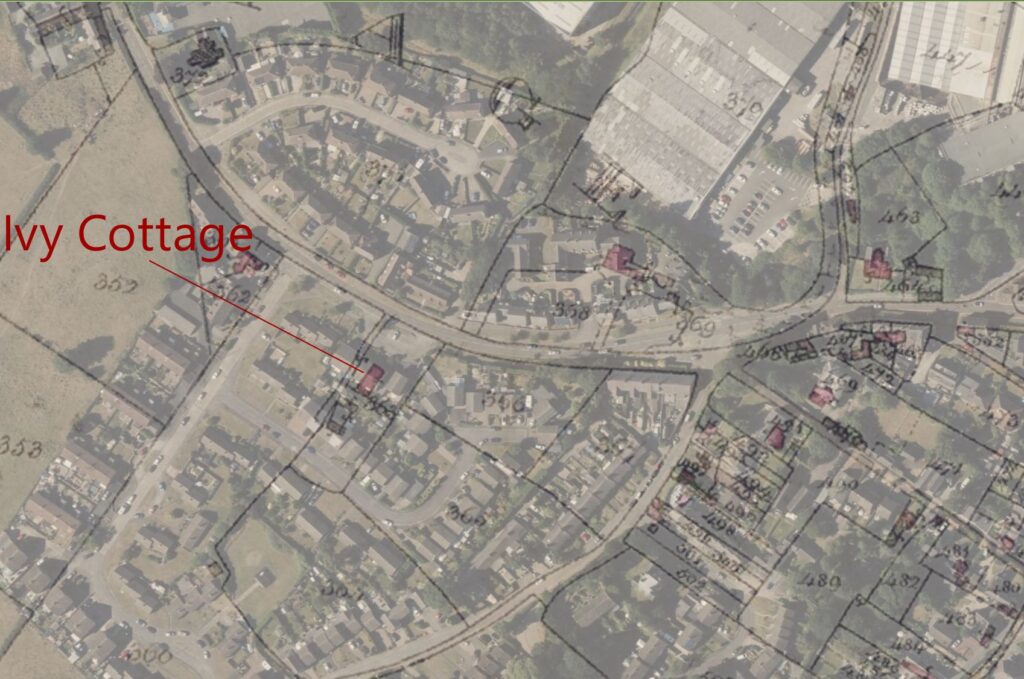Wesleyan Methodists emphasized personal salvation through faith, holiness of life, and active social engagement. They stressed free will, the possibility of sanctification, frequent preaching, and Bible study. The movement promoted moral discipline, education, and charity.
Wesleyans from Armitage or Handsacre wanting to practice their faith in the early 1800s had to travel to Rugeley or Brereton. Potters like John Sankey had children baptised there around 1820. John Scott a Wesleyan lay preacher, and his wife Sarah, also baptised their daughter, Sarah, in Rugeley, in 1823. John Scott hailed from Ireland and lived at Church Farm in Armitage working as a butcher and running the 90-acre farm.
The first evidence of Wesleyans actually worshipping in the parish is from 1828 when George Hall registered his Handsacre house as a meeting place. This probably didn’t last long though because John Scott’s son, Robert, with his second wife was also baptised in Rugeley in 1833. It would appear that Rugeley and Brereton also closed for a time given that his next two children, John and Sarah, were baptised at St. John the Baptist in Armitage in 1838 and 1840 respectively.
In the mid 1850s though Joseph Moore of Ivy Cottage registered his house for use by Wesleyans. The congregation quickly grew too large for the house – on Tuesday 24th May 1859 the foundation stone for a 150 seat Wesleyan chapel was laid in the grounds of Ivy Cottage by John Brewer, a prominent Wesleyan from Walsall. The site was donated by Joseph Moore on a portion of his garden fronting the Rugeley Road. Also present at the ceremony was Rev. John Cooper of Rugeley, Rev. J. Kendall of the Stafford Circuit and the Rev. John Baker, an Independent Minister from Rugeley. After singing and prayers over 300 guests were given tea in a marquee set up in the grounds.

In January 1863 John Scott was presented with a copy of Bagster’s “Commentary Wholly Biblical” and a large-type Wesleyan hymn book at the Wesleyan Chapel in Brereton as a recognition of over 46 years as a lay preacher. Scott died later that year and a marble tablet was erected in the Wesleyan Chapel at Stafford in his memory.
Joseph Moore died the following year but his daughter and John Scott’s daughters worked to help the congregation in Armitage and in 1867 a new Wesleyan Chapel was erected in Old Road. The building was about 50 yards down the road on the right and was funded by a grant from the Chapel Fund Committee of the (Wesleyan) Connexion together with a loan. Numerous events were held to pay off the debt including the following reported in the Staffordshire Advertiser 21st September 1867:
“The bazaar in aid of the funds of the new Wesleyan Chapel at Armitage was held in the Town Hall, Rugeley, on Monday and Tuesday last. The bazaar was opened by Mr. I. Jenks, Esq., of Wolverhampton, who gave a donation of £10. A few practical remarks were delivered by Mr. Glover, solicitor, of Walsall. The attendance on Monday was very numerous, and the ladies who presided at the stalls (Mrs. Faull, Miss Moore, and the Misses Scott) were busily engaged during the day. The proceeds amounted to £83, and a large number of articles remain undisposed of. The amount realised will place the trustees in a fair way of speedily discharging the whole debt.”

They were obviously successful because a year later they managed to build a new room attached to the chapel for a school. Little is recorded about the chapel but newspapers carried reports of their annual harvest festivals and the like. In 1902 the Lichfield Mercury reported that they held a two day harvest thanksgiving festival and that the chapel harmonium had been played by Lois Morecroft (daughter of Thomas) and Hannah Morecroft (daughter of Samuel). After that date there are no newspaper records. A 1905 article about the Armitage Boys Club meeting in ‘the old Wesleyan schoolroom’ suggests that at least the schoolroom was no longer used by that time. According to Bill Wright in ‘Notes for a history of Armitage’ the chapel was knocked down in the mid 1920s.
Gradually the differences between the Wesleyans and the Primitive Methodists lessened and the two denominations eventually merged with the United Methodists to become the Methodist Church of Great Britain in 1932.
